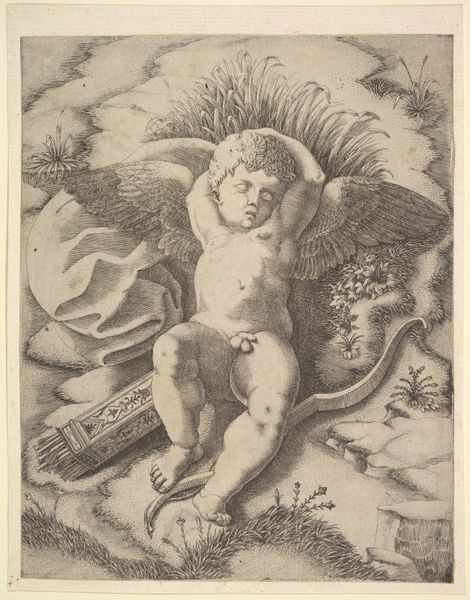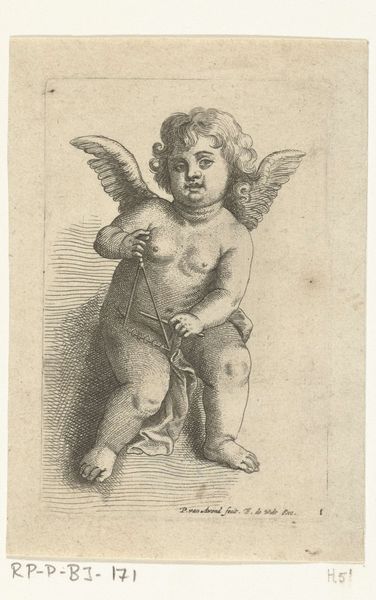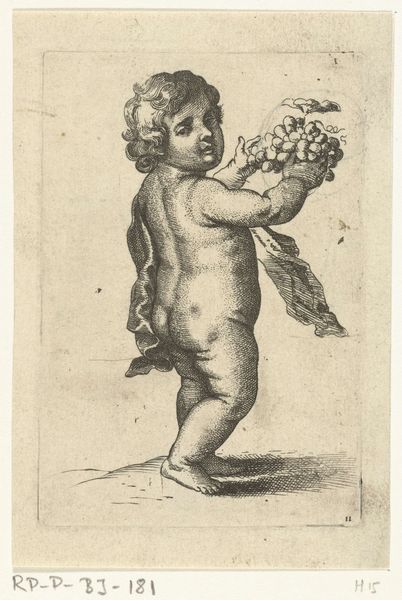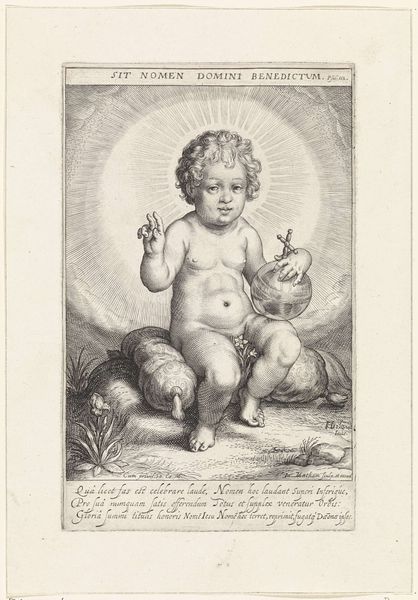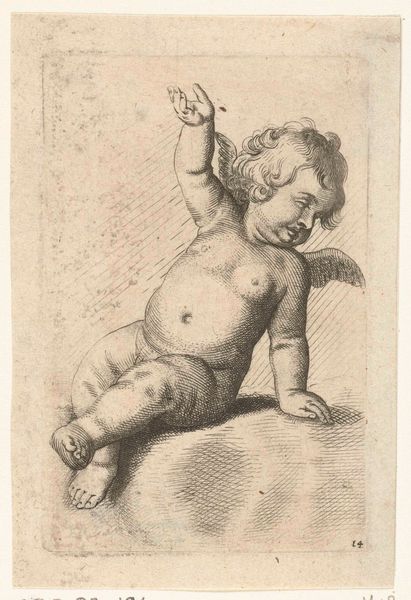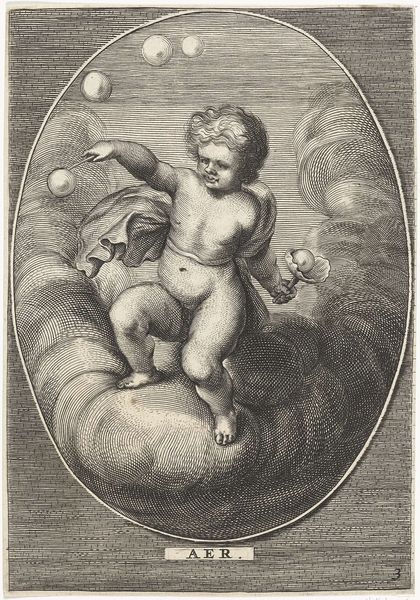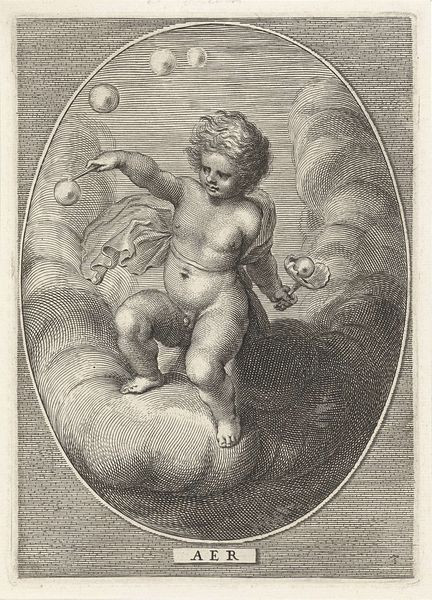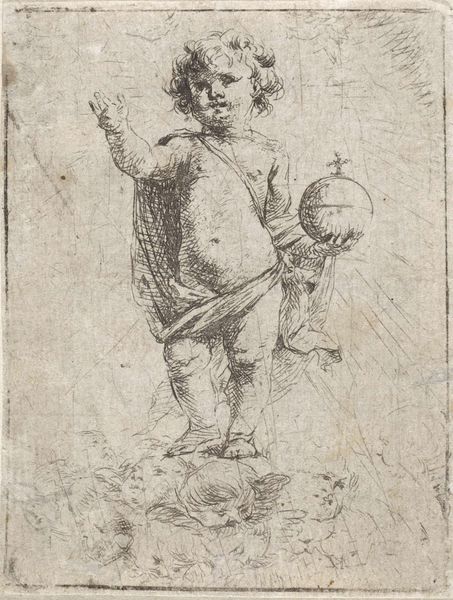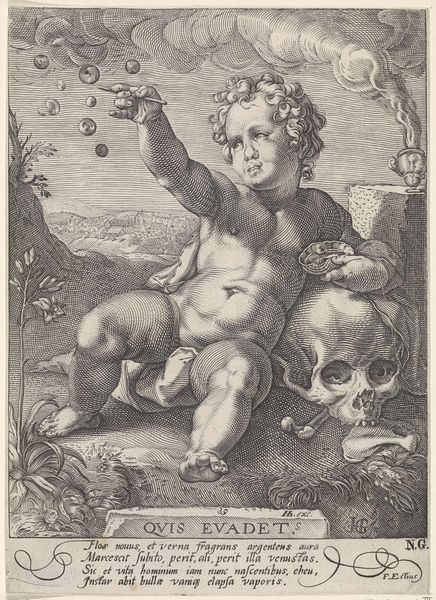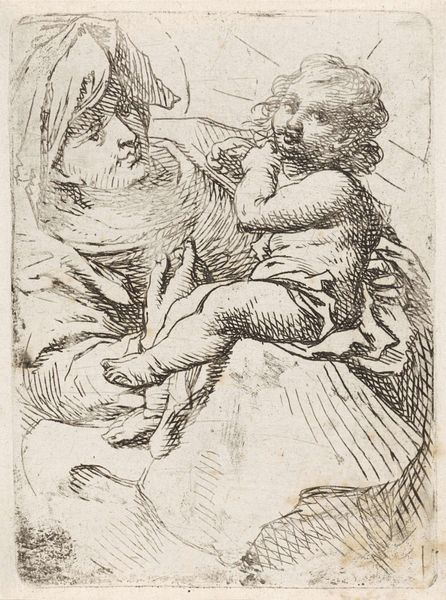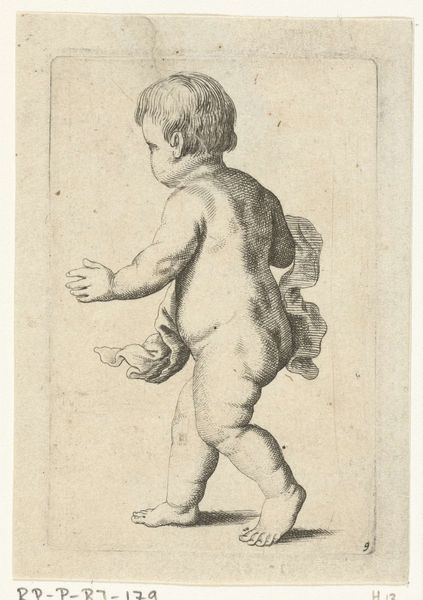
print, etching
#
allegory
#
baroque
# print
#
etching
#
figuration
Dimensions: height 136 mm, width 111 mm
Copyright: Rijks Museum: Open Domain
Editor: Here we have "Zegenend Christuskind," or Blessing Christ Child, an etching dated sometime between 1617 and 1728. It’s an anonymous work, found at the Rijksmuseum. There's such delicate line work. What's striking to me is the cherubic quality contrasted with the weighty symbolism of the globe and serpent. What catches your eye, as an art expert? Curator: Oh, it whispers to my soul of delightful paradoxes! The Christ Child, rendered with such innocent plumpness, yet He's crushing the serpent—a timeless symbol of sin. And look! He holds the orb – our world - almost like a toy! A visual poem on power and gentleness. The baroque flourish is present in the swirling cloudscape... almost an afterthought? Do you find it distracts, or enhances the composition? Editor: I think it enhances it. It does emphasize the... almost stage-like quality. Curator: Precisely! Think of the printmaking process: line by delicate line, meticulously etched to birth this world of contrasts. One tiny slip and the entire allegory falls flat. The detail in the snake is incredible too. You get the feeling it really means business. It shows a lot of artistic awareness, in terms of creating and exploring themes, that is often undervalued. Editor: Definitely a reminder that prints can hold such weight and artistry. The way the anonymous artist conveys this mix of triumph and vulnerability is fascinating. Curator: I concur. Each time I revisit it, the quiet audacity of it all renews itself! It feels a bit like hearing a familiar melody recast in an avant-garde symphony. Art always holds surprise within, right? Editor: Absolutely! It has been enriching and it has completely shifted my initial perception. Thank you.
Comments
No comments
Be the first to comment and join the conversation on the ultimate creative platform.

